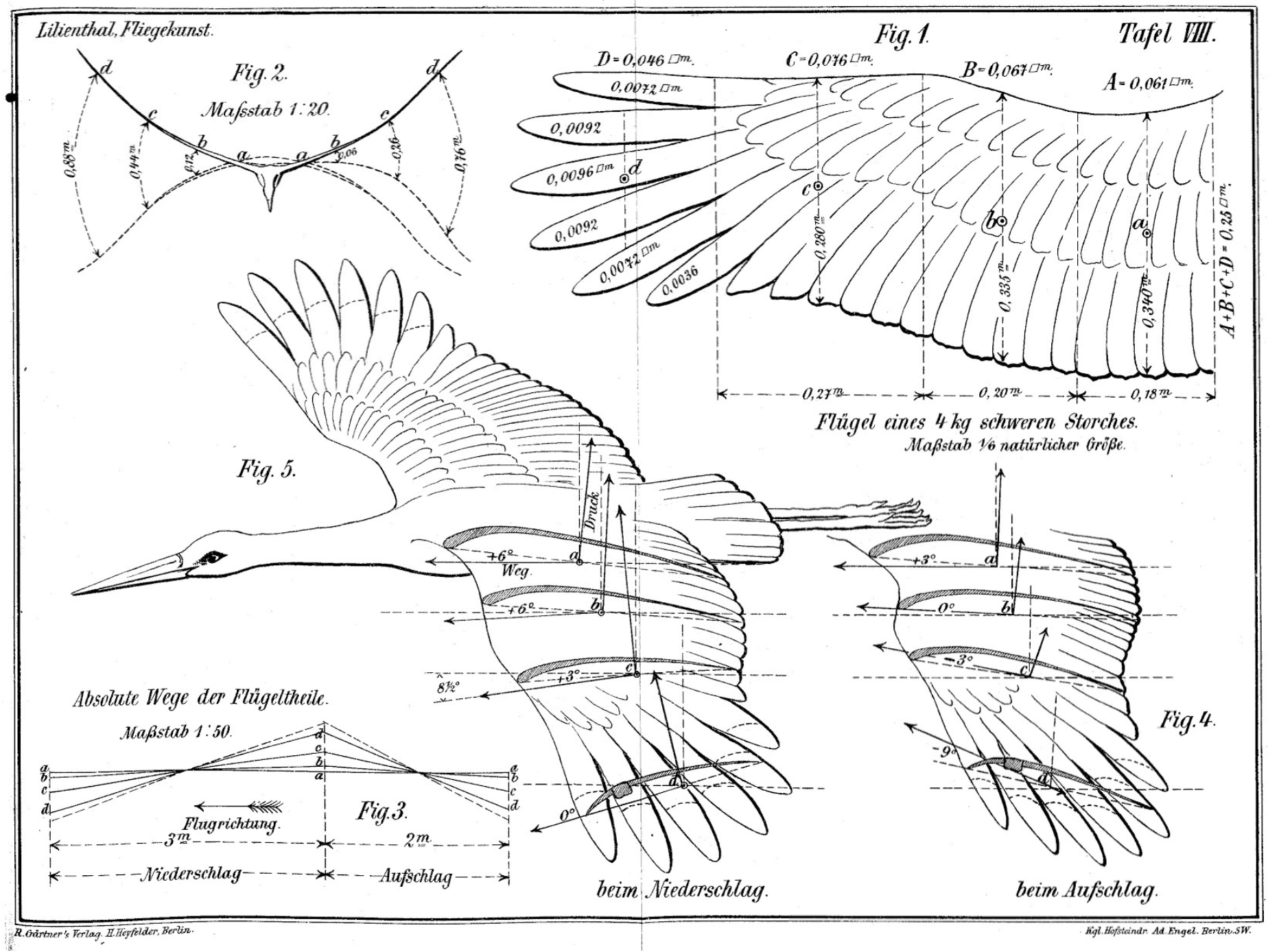PAST TALKS 2022
20 April 2022
On Toys and the Flying Problem:
Play, Desire, and Utility in 19th Century America
STELLA ROSSIKOPOULOU PAPPA
MIT, Massachusetts Institute of Technology
Respondent:
Nikos Magouliotis
ETH Zurich/gta

Plate VIII from Otto Lilienthal's book "Birdflight as a Basis of Aviation", 1889
My research focuses on the conditions under which the desire to fly was expressed in the late 19th century and led to the development of aviation, both in terms of the establishment of the new discipline of Aeronautics, but most importantly looks into the wide spread of kites and flying toys as a common recreational pastime among children. The success of Otto Lilienthal’s
gliding experiments and the ramifications of these inventions and discoveries allowed for the desire to fly to appear in the intellectual thought initially as a design to play.
I argue that although flying was initially conceived as an act of play, its technological realization had a more significant impact. This impact was fundamental to the transformations in the techniques of observing, representing, modeling, and ultimately knowing that are consistent not only with the design and engineering discipline but also with many aspects of the materiality in everyday life. Not only is this the case by the mere spatio-temporal coincidence of toys and flying experimental devices, but more importantly, insofar as toys functioned as an instrument for an alternative model of explaining the various transformations in the types of knowledge and
production in the late 19th century.
***gliding experiments and the ramifications of these inventions and discoveries allowed for the desire to fly to appear in the intellectual thought initially as a design to play.
I argue that although flying was initially conceived as an act of play, its technological realization had a more significant impact. This impact was fundamental to the transformations in the techniques of observing, representing, modeling, and ultimately knowing that are consistent not only with the design and engineering discipline but also with many aspects of the materiality in everyday life. Not only is this the case by the mere spatio-temporal coincidence of toys and flying experimental devices, but more importantly, insofar as toys functioned as an instrument for an alternative model of explaining the various transformations in the types of knowledge and
production in the late 19th century.
A Skin that Leaks
KATARZYNA BALUG
Harvard GSD
Respondent:
Evangelos Kotsioris
Museum of Modern Art in New York
& Stelios Giamarelos
Bartlett School of Architecture

Graham Stevens, 1970, Hovertube, Cornwall, England
In the late 1960s, the perfection of enclosure was proclaimed as liberating in both architecture - with fully mechanized climate control - and spaceflight with the first human departures from Earth’s orbit. The temporary, do-it-yourself inflatable architectural installations prevalent in Europe and the United States in the late 1960s have accordingly been historicized as space-inspired ‘bubbles’, a minor counter-cultural episode of modernist critique. This paper argues that, though indeed inspired by pneumatics and space research, and Buckminster Fuller’s moniker “Spaceship Earth,” such inflatable installations elicited an imaginary since overlooked by scholarship, characterized not by controlled enclosure but by their leakiness. Through analysis of the structural and material logic evident in inflatable installations by English artist Graham Stevens, a significant contributor to the inflatable scene of the late 1960s, the paper explores the contours of a “post-lunar imaginary” that emerged briefly an an alternative to the modern narrative of freedom through progress.